14 Types of Forks to Impress & Enhance Any Meal
Author: Rick Worst | Editor: Omar Alonso
Review & Research: Jen Worst & Chris Miller
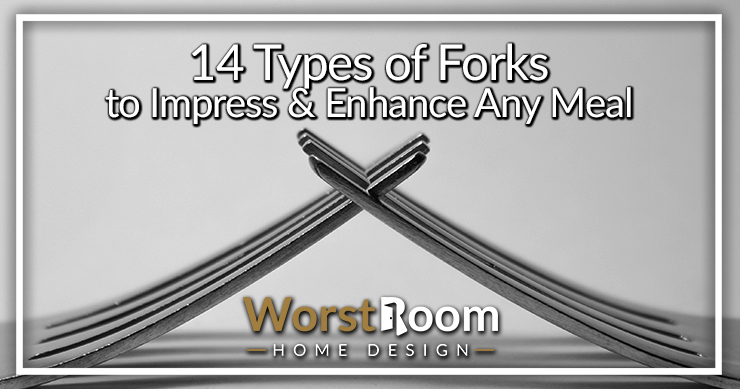
Most people go all their lives using one type of fork for all the dishes they have. However, you will notice that certain types of forks are well-catered to serve a selection of food.
Having multiple forks is a familiar scene in most fine-dining restaurants. It is mainly because the slightest change in the tine count and size of the fork can bring about a world of difference.
So, today we will be looking into all the various types of forks you'll come across in your life. Knowing the specific purpose for each will enhance your dining experience.
14 Types of Forks
In this section, we'll go through the various kinds of forks out there. You'll find useful options and then sophisticated and fancy ones to help you impress your guests. On to the different types of forks with their pictures and their uses...
Table Fork
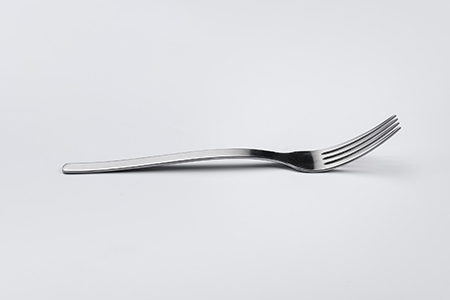
This is one of the most common cutleries we see at dining tables. Its design and shape aids versatility which allows the forks to cater to most dish types.
It's common to mistake them for dinner forks because of how similar they are. However, we assure you their differences are more than noticeable.
In the modern world, the table fork is like a brand where any and every fork with 4 tines is referred to as a table fork.
If you step foot inside a fine-dining restaurant that knows their forks, you will rarely see a table fork. That is because they have specialized forks for every purpose, which would be expensive for the average household to replicate.
Overall, these are great for any domestic setting, and they're readily available too! You can obtain table forks with almost any cutlery set you invest in.
It also saves up on cost as it can be expensive to buy tons of different types of forks for each food category.
Spaghetti Fork
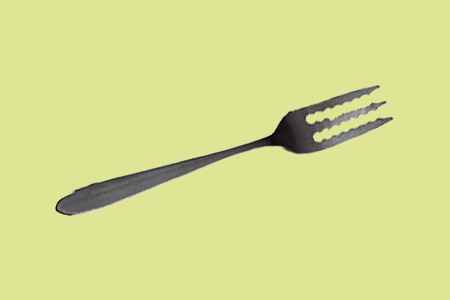
When's the last time you had spaghetti or pasta? Did you face issues where your noodle strands kept slipping out of the tines? Well, this next fork type is for all those who love noodles and pasta.
From first impressions, the spaghetti fork is quite different from your average table fork. While it does have 4 tines like most forks, these have tiny ridges on either side of each tine.
As a result, when you dig into your spaghetti and spin your fork around, the spaghetti won't slip out so easily. That makes the overall eating experience much more enjoyable.
For those of you who absolutely can't go a day without having pasta, these types of forks and their uses should be ones you invest your time in finding.
That reminds us, spaghetti fork types aren't available everywhere, and often it will take you hours to find one. You are more likely to save time looking for these forks online rather than in retail stores.
In any case, this is solely catered to people looking to enhance their eating experience and save their outfits from accidental spaghetti slips. Most people might argue that a dinner fork works just as well, but we assure you the ridges do make a world of difference.
Salad Fork
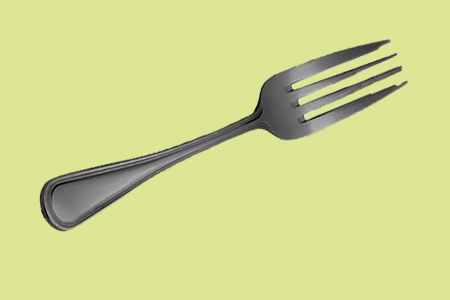
Second, to the table fork, salad forks are also very common in the modern dinner table. From the outside, the differences between a salad fork and any other fork might seem indistinguishable.
However, with a closer look, you will notice that the salad fork has a cutting edge that lets you split apart your greens or whatever types of zucchini you enjoy.
In various fine-dining restaurants, the salad fork's placement in relation to other forks is always something to put thought into. For example, if the customer orders salad as an entree, the salad fork is placed first.
If the salad is to come after the main course, the dinner kinds of forks or table fork styles will come first, and the salad fork will follow.
It is pretty easy to misplace dinner forks with salad ones because of their similarities. But the tine length of dinner forks is a tad longer, and the shape is more rounded than the cornered shape of the salad fork.
These forks are readily available and won't take up much shoe-leather cost when looking for one.
Dinner Fork
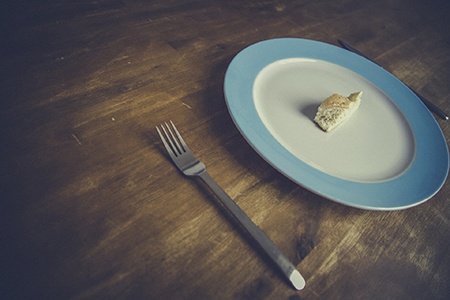
Longer than table and salad forks, the dinner fork is another one of the most commonly used types of forks.
With four tines all the same height, the fork makes a great companion for main courses. They are also quite versatile, as the table forks, because they share a lot of similarities.
Getting your hands on one of these will be very easy as they are available in almost all dinner sets.
They are also sold in standalone boxes, which saves cost if you aren't keen on investing in a cutlery set.
Also, when it comes to dinner forks, there are tons of stylish designs as much as there are simple ones.
Dessert Forks
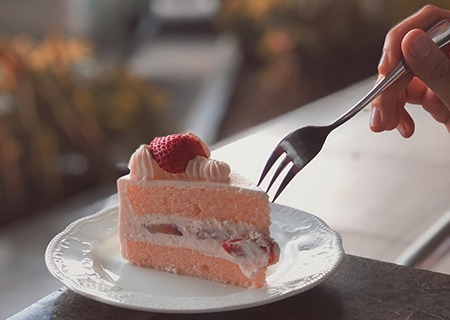
As the name suggests, these forks are specifically designed to complement eating desserts. Compared to other types, these forks are much smaller in size, making them perfect for cutting up a cake or a pie.
This isn't a total necessity, but it is a nice touch to have in any household. Most people prefer to have desserts after their meal, and so, these are handy pieces of cutlery to have around.
We wouldn't say these forks are entirely hard to find; in fact, you will find them with most of the large dining sets. Also, don't be confused if you see the term pastry fork instead; they mean the same thing.
Various retailers sell standalone boxes of dessert forks as well, so you don't necessarily have to spend a ton of money on getting a whole set.
Spork
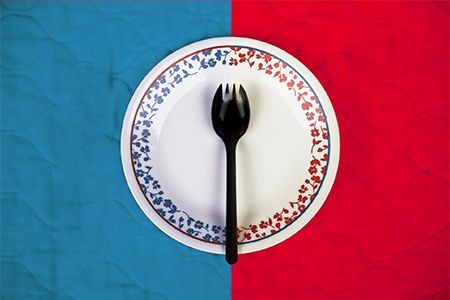
A unique take on merging the spoon and fork is what made the spork so popular. In terms of its shape and size, it isn't exactly just a fork or a spoon, which allows it to carry out both tasks efficiently.
Nowadays, most restaurants use sporks for takeaway orders because they cut down on their costs. But you won't find any fancy flatware or silverware sporks at a nice restaurant, though I'd bet someone manufactures them out there.
Instead of switching between a spoon and a fork, the spork helps you reap the benefits of both. While most people think it is rather inefficient due to the small tines, it can be handy in soup-like dishes with solid pieces of food inside.
Using the spork allows you to pick up meat pieces and along with the broth and enjoy it in one serving. These are pretty goofy but fun fork styles. Samuel W. Francis filed the patent for the spork utensil in 1874 for "combined knives, forks, and spoons."
Most companies make disposable sporks because of their high demand in the world of takeaway food. But if you look hard enough, you will find beautiful separate sets of wooden or silver sporks.
Roast Fork
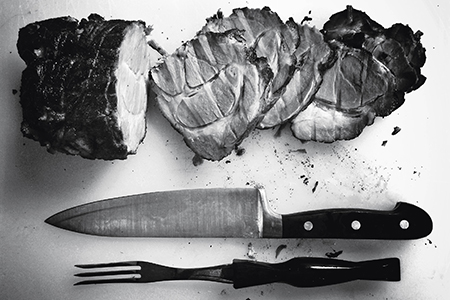
A toasting fork, also known as a roast fork, is mainly used to hold any meat of your choice over an open flame. They make great fire pit tools to help you enjoy your relaxation time. Just make sure you know how to bank a fire!
These kinds of forks are quite different from the ones mentioned above in terms of shape, size, and features. It features two sharp tines (sometimes even three), making stabbing meat much easier.
The neck of these types of forks are also quite long, which lets you hold the meat across the fire for long periods of time.
When grilling or roasting meat in an open flame, it can be pretty easy to burn yourself, and so, the long neck keeps you at a safe distance. As a result, you can maneuver your meat over the flame and flip it when necessary.
Moreover, the roast fork usually has a wooden handle that insulates heat rather than conducting it.
Therefore, when you're roasting, the heat won't reach your hands and burn you. Some might not come with wooden handles, but it is always best to invest in one that does.
Fruit Fork
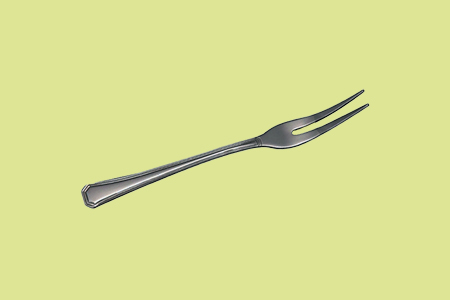
The visually interesting fruit fork is meant to be used with eating small portions of fruit. Types of grapes, cherries, and types of plums could be eaten as is, but larger fruit would be cut into smaller pieces.
Often these different forks are served alongside a cup of fruit in restaurants where it's all already cut to sizeable portions.
These forks are more about sophistication and elegance rather than utility, because they don't necessarily perform their job any better than a table fork would, except for being a bit smaller. If you want to impress your guests and create a ritzy atmosphere, this is a great way of doing it.
Extendable Fork
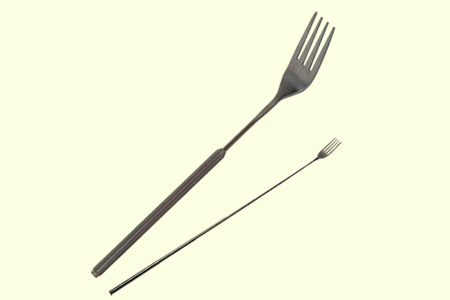
An extendable fork is very similar to a table fork in size and shape, except for one key difference. This difference is that the extendable fork can be elongated thanks to a telescoping shaft that collapses into the stem of this unique utensil.
These aren't fancy or impressive, but for people with various difficulties a much longer fork can enable them to eat much more easily without help. They're also fun for a simple gag, where you could reach across the table to take some food off of someone else's plate.
Oyster Fork
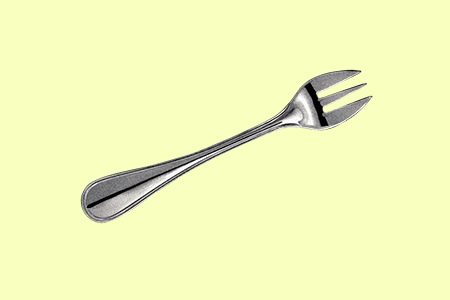
Oyster forks are designed specifically for enjoying all types of oysters right out of the shell, but some use them to enjoy crab meat as well, as they're helpful with cracking the shells of any seafood items like shellfish and shrimp, too.
Those who know how to stage a dining room delight in the fun trivia fact that the oyster fork is the only of the types of forks that are placed on the right side of the dinner plate.
For many of us who don't live near the ocean, seafood is a rare experience. Using these little forks simply makes it a more enjoyable and memorable experience. They're a fairly new development from the 18th century. One may wonder if the oyster fork is necessary, but as a product of Victorian cutlery, sometimes it's about the glitz and the glam.
Disposable Fork
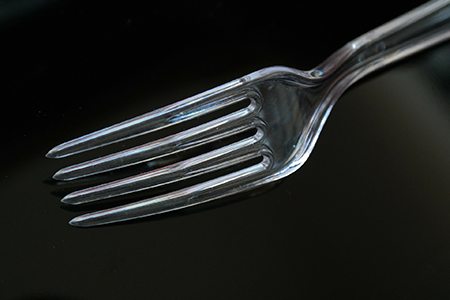
Disposable kinds of forks largely come in white colors in packs of 50 or more. They're made of plastic and are very durable, meaning they won't break and cause a choking hazard or anything of the sort. Describing these is funny because I know every single person reading this has used them.
You can even find biodegradable versions so you won't feel as guilty about using them because you don't want to deal with washing the dishes. There are disposable types of spoons and knives too, so you might as well get all three along with paper plates and bowls.
Cocktail Fork
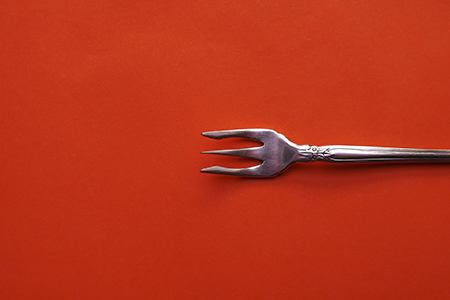
Cocktail forks are used for the types of garnish that are added to drinks to turn up the flavor and sophistication. You'll see bartenders use a cocktail fork to add an olive to an adult drink, and then dispose of it or serve it to you with your drink.
Nicer cocktail forks aren't disposable and should be washed and reused. They're of similar size as fruit forks and oyster forks, so you could let any of these fork types pull double duty. Once again, if you want to impress, get a set of these for your home for when you entertain guests.
Carving Fork
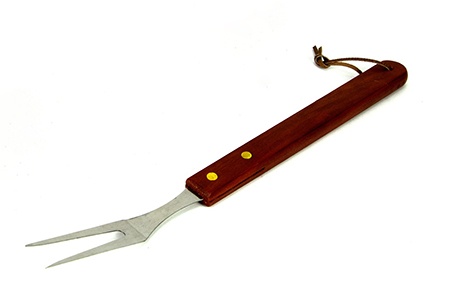
Carving fork styles aren't meant to transport food from your plate to your mouth. They're designed with two very long and sharp teeth to pierce large hunks of meat to help hold it still to enable you to more easily slice the meat.
These different forks are designed specifically for this purpose because, if you haven't tried it, you need to stabilize the meat deeper in the middle and bottom. Otherwise it'll wobble around too much, making carving it an embarrassing task.
If you've ever seen one of these, it was likely during a Thanksgiving meal when someone decided to make a show of carving the turkey. You won't use it often, but when you need it, there's no better fork option.
Granny Fork
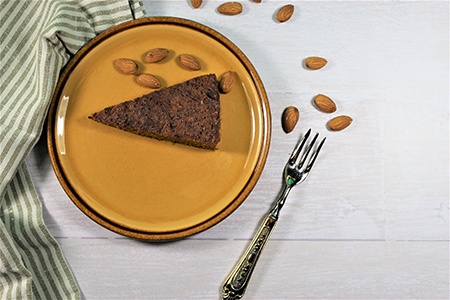
You don't find granny forks often any more, though you (seriously) may find some in your mother or grandmother's utensil drawers. These forks are used for various preparation purposes, but many like them for stirring foods like pasta or mashed potatoes.
These will have three tines on them and are a bit longer and larger than your standard fork. They also tend to have more decorative handles, made out of wood most of the time. This creates a larger stem to hold on to and makes it stand out from a normal dinner fork.
Types of Forks for Every Meal
Fine dining may not be everyone's cup of tea, but if you want to enhance your eating experience, knowing the types of forks and their uses will help immensely. All the forks discussed above are some of the most common ones you will come across.



